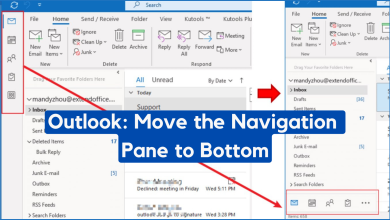Fix: Outlook Rules not Working on Windows 10
Your outlook rules may not work if you are using an outdated version of the Outlook client. Moreover, a corrupt Outlook profile or a corrupt OST file may also cause the error under discussion.
The issue arises when the user has set up a rule on his Outlook profile but that rule is not executed when an email meeting the rule condition is received. The issue is reported on Windows and Mac (regardless of on-premises Exchange or online Exchange Server), usually, after an OS/Outlook update or migration of mailboxes.
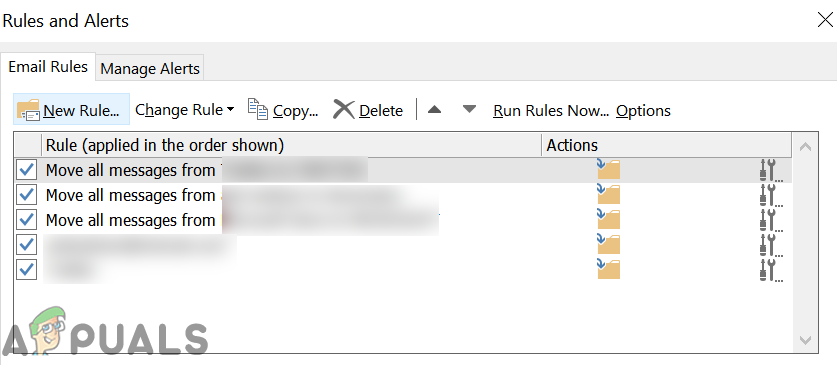
Before moving on with the solutions to fix Outlook rules, make sure there are no conflicting rules in place. Moreover, keep in mind that an email based on a rule could not be forwarded to more than 10 external users. Furthermore, the Outlook rules may not work on the connected accounts (Gmail, Yahoo, etc.), as it only supports Outlook.com accounts. No rules are applied to the mail that is flagged as junk and moved to the junk folder (you may have to change your junk filters, blocked and whitelist/safe sender settings to allow a particular email to reach your inbox).
Additionally, Outlook rules might not work if you have applied more than 100 rules. Also, rules applied on the client-side (i.e., on the Outlook client) will not work on the server-side (i.e. on the Outlook web app). Moreover, do note that some rules will work on new emails (not the existing emails). For some of the users, the Outlook rules did not work if there was an IMAP folder involved, so, make sure that is not the case. Do not use @ when applying the “With Specific Words in the Sender’s Address” rule, as it will not work. Also, Outlook rules do not work on shared mailboxes. Finally, make sure Journal Report NDR is disabled as it disables all rules applied to it. Last but not least, try to disable/enable cache exchange mode to rule out any temporary glitch.
Solution 1: Update the Outlook to the Latest Build
Outlook is updated regularly to add new features to it and patch known bugs. You may encounter the error at hand if you are using an outdated version of Outlook. In this case, updating Outlook to the latest build may solve the problem.
- Launch Outlook and open its File menu.
- Now, in the left half of the window, select Office Account, and then, in the right half of the window, click on the button of Update Options.
- Then, in the sub-menu shown, click on Update Now and wait for the completion of the Outlook update.
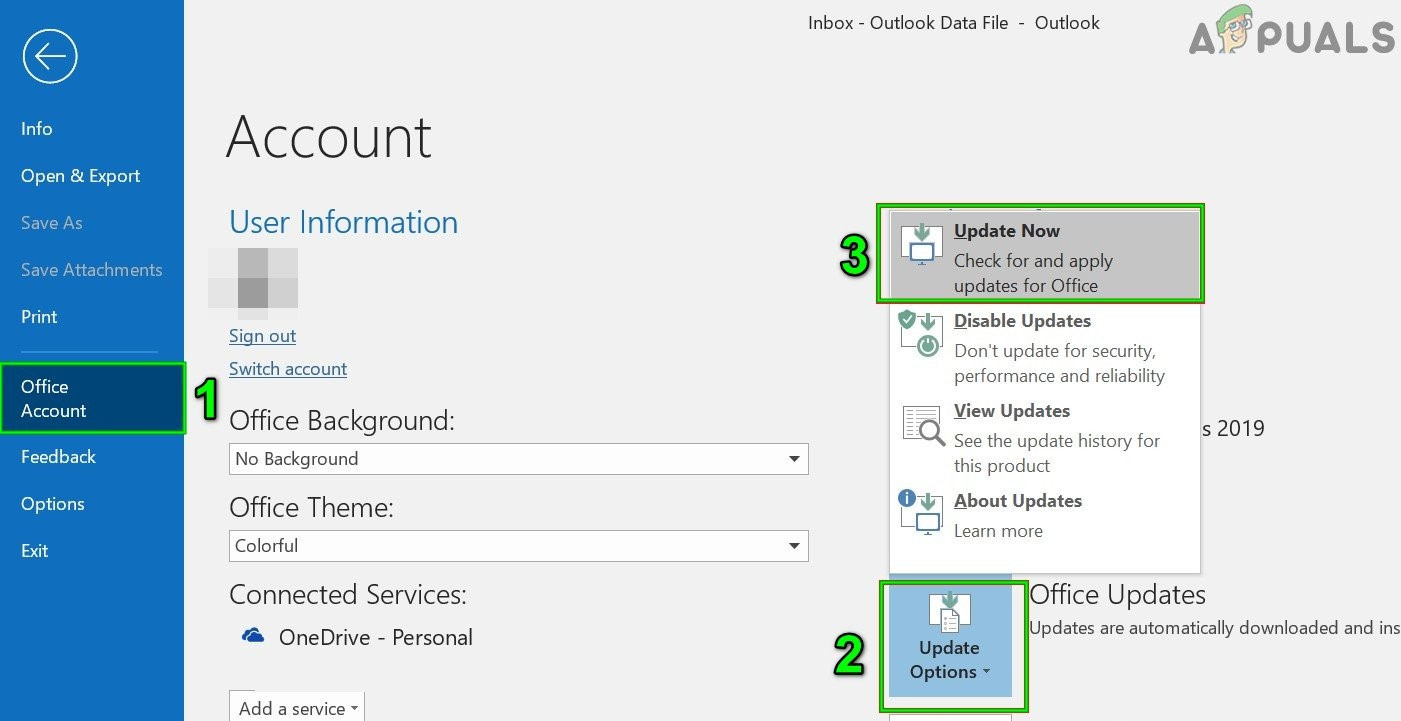
Run Update Now of Outlook - Now, update Windows to the latest build. Make sure none of the optional updates is pending.
- Then restart your system and upon restart, check if Outlook rules are working fine.
Solution 2: Change Offline Settings of Downloading Emails to All
You may fail to run rules on all the messages (client-side rules) of the Outlook client if its offline settings are set to sync for just a limited time (e.g. 3 days or 1 year). In this case, changing the offline settings to All may solve the problem.
- Launch Outlook and open its File menu.
- Now, in the Info tab, click on Account Settings, and once again, in the menu shown select Account Settings.
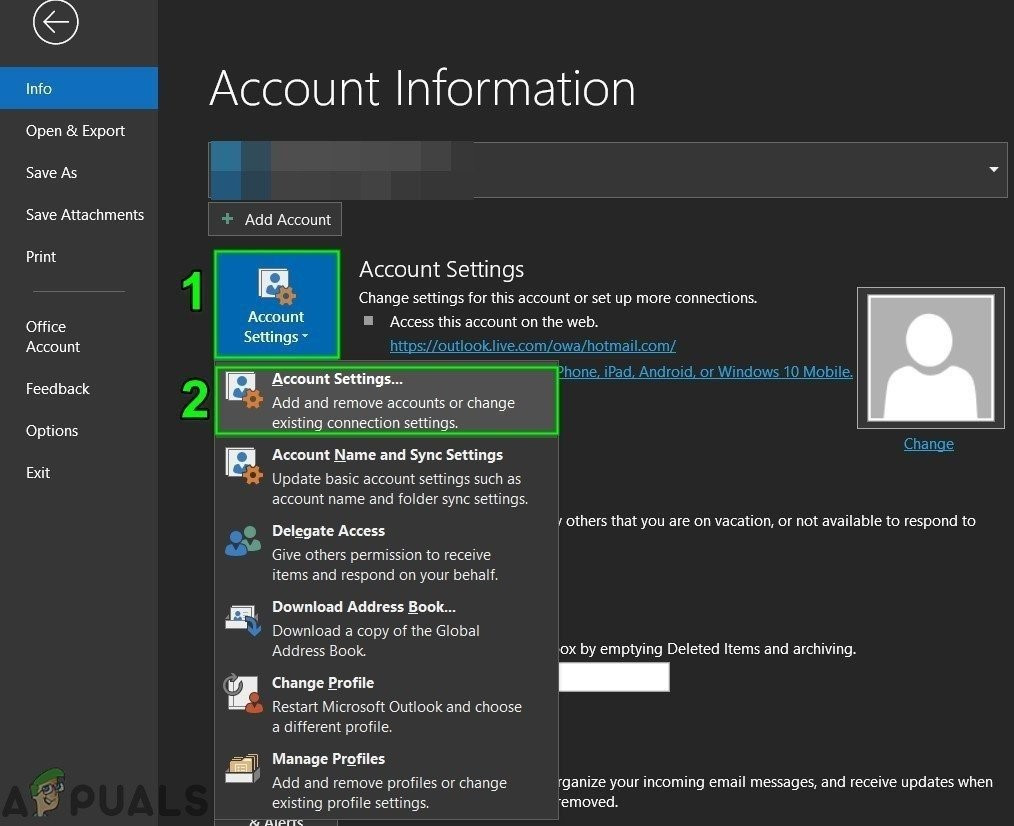
Open Outlook Account Settings - Then, select the problematic account and then click on the Change button.
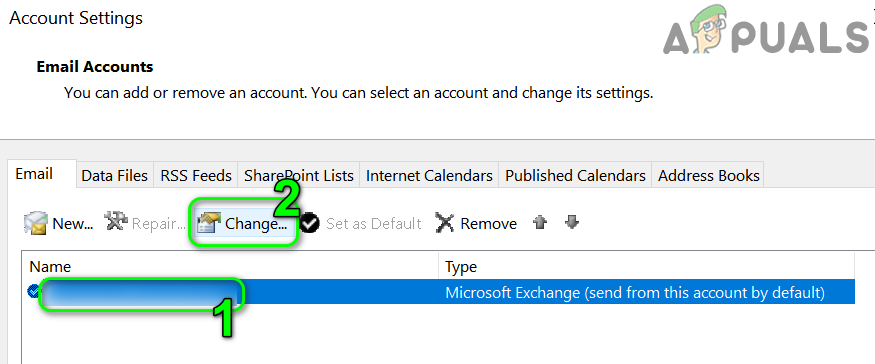
Click on Change After Selecting the Email Account of Outlook - Now, in the Offline Settings, move the slider of Download Email for the Past to the complete right end to change the duration to all time.

Change Download Email for the Past to All - Then, click on the Next button and then click on the Done button.
- Now, relaunch Outlook and check if its rules are working fine.
Solution 3: Disable the Option of Stop Processing More Rules
The Outlook rules apply in the order of top to bottom. Some of the Outlook rules might not work if a rule higher in order is met & applied and that rule is configured to stop the processing of more rules. In this scenario, disabling the option of Stop Processing More Rules for that rule or all rules may solve the problem. But keep in mind this can lead to multiple email messages (e.g. one in your inbox and the other in the folder where you moved the message using rule).
- Launch Outlook and click on Rules (on the Home tab).
- Now, in the dropdown menu, select Manage Rules and Alerts.

Open Manage Rules & Alerts of Outlook - Then select one of the problematic rules and click on Change Rule.
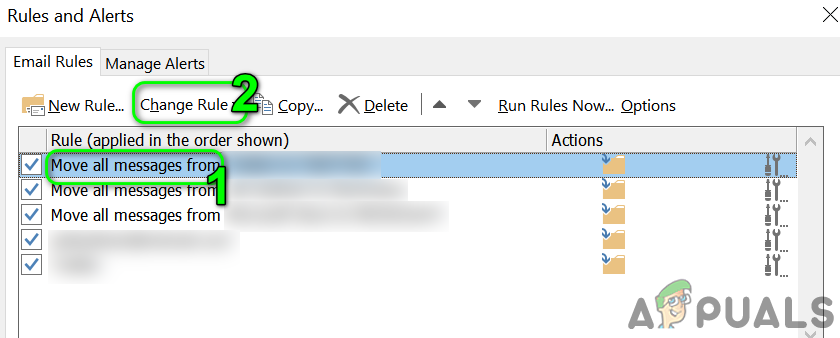
Click on Change Rule After Selecting the Outlook Rule - Now, in the dropdown menu, select Edit Rule Settings and then click on the Next button (in Select Condition Window).
- Then uncheck the option of Stop Processing More Rules and click on the Next button.
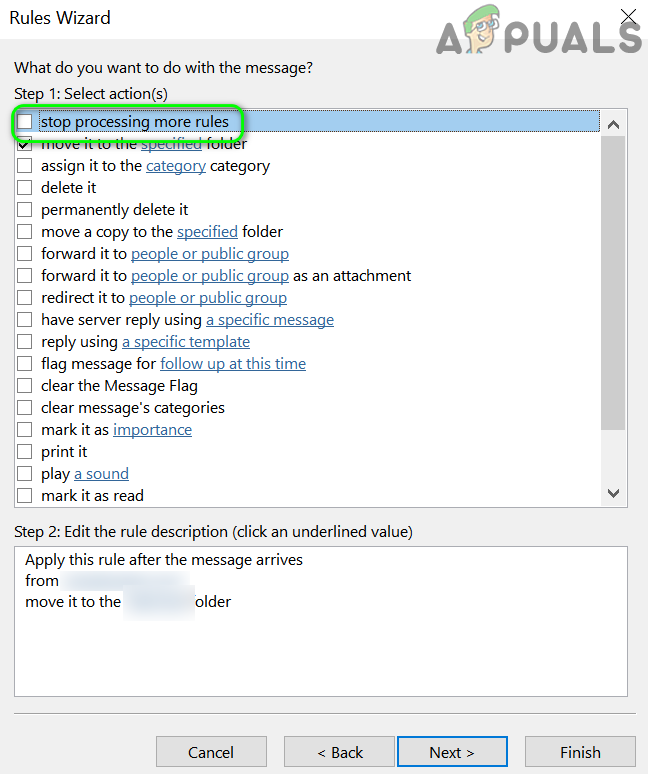
Uncheck the Option of Stop Processing More Rules - Once again, click on the Next button in the exceptions window and then click on the Finish button.
- Repeat the same process for all rules and then check if Outlook rules are operating fine.
- If not, enable the rule of “On This Computer Only” and check if the issue is solved.

Enable the Option of On This Computer Only
Solution 4: Delete the OST File
Outlook uses the OST file to store its data. You may encounter the error at hand if the OST file is corrupt. In this case, deleting the OST file (the file will be recreated on the next launch of Outlook) may solve the problem.
- Exit Outlook and make sure no processes related to it is operating in the system tray or Task Manager of your system.
- Now, click in the Windows Search bar (on the Taskbar of your system) and then type Control Panel. Now, in the search results shown, click on Control Panel.

Open Control Panel - Then, open User Accounts and select Mail (Microsoft Outlook).

Open Mail in Control Panel - Now, click on Email Accounts and then, in the Account Settings window, navigate to the Data Files tab.
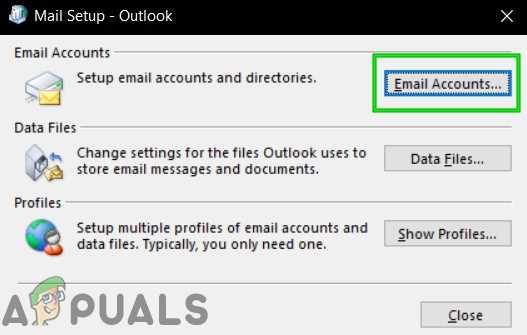
Open Email Accounts from Mail Setup - Then, select the problematic account and click on Open File Location.

Opening Outlook Data File Location - Now, minimize the Outlook folder window and close all other windows (Account Settings, Mail Setup Windows).
- Then switch to Outlook folder windows and delete the OST file.
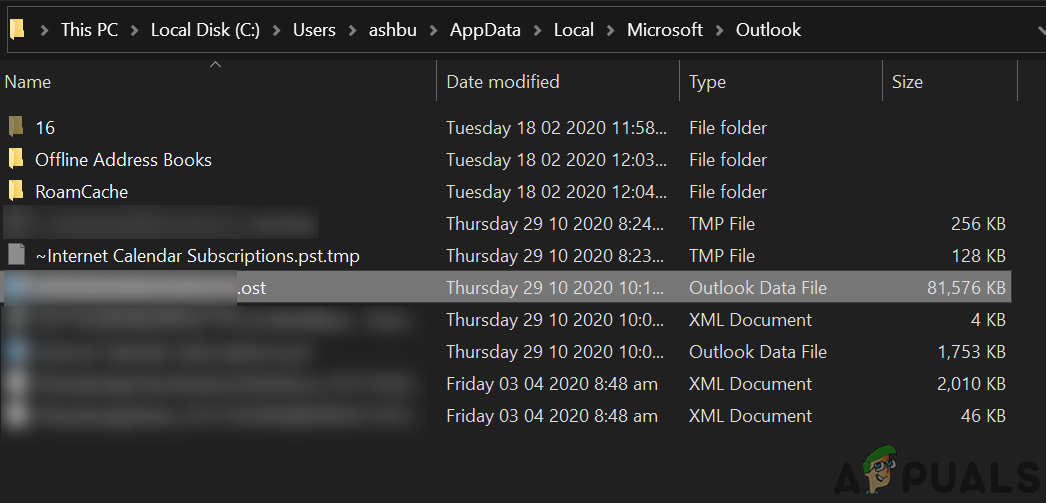
Delete the OST File - Now launch Outlook and let it sync to the server. Then check if Outlook rules are working fine.
Solution 5: Create a New Outlook Profile
Outlook rules might not work if your Outlook profile is corrupt. In this context, creating a new Outlook profile may solve the problem.
- Exit Outlook and make sure no process related to it is operating in the Task Manager of your system.
- Click in the Windows Search box and type Control Panel. Then, in the list of results shown, select Control Panel.
- Then, open User Accounts and select Mail (Microsoft Outlook).
- Now click on the button of Show Profiles and then click on the Add button.

Show Profiles in Mail Setup - Then enter the name for the profile and then follow the prompts on your screen to add the new profile.

Add New Profile to Outlook - After adding the profile, select the option of Prompt for a Profile to be Used and then click on the Apply/OK button.
- Now, launch Outlook and select the newly created profile (when asked to select) to check if the rules are operating normally. If you get prompt for, select to Keep Client Rules.
- If not, exit Outlook and delete all of its profiles (backup the essentials).
- Now add one profile and check if Outlook rules for it are working fine.
Solution 6: Use Outlook Web App to Create the Rule
Outlook supports both the server-side (the rule created using Outlook web app) and client side-rules (created using the Outlook client). If client rules are not working, then using the Outlook web app to create a server-side rule may solve the problem.
- Launch a browser and navigate to the Outlook web app (e.g. Outlook live that is used for personal Outlook accounts).
- Now, near the top right of the window, click on the Settings (gear) icon and then click on View All Outlook Settings.
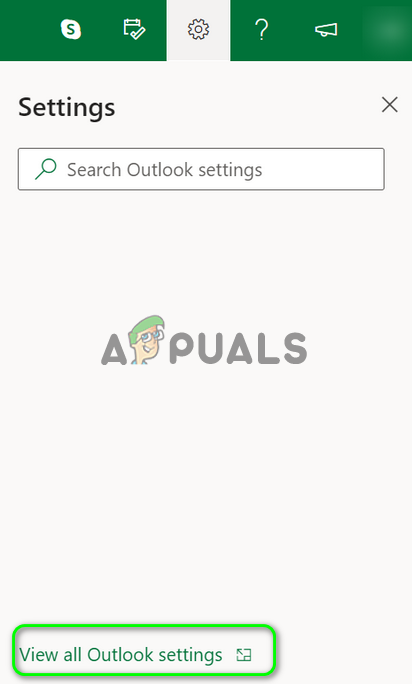
Open View All Outlook Settings - Now, select Rules (Mail<Rules) and then click on Add a New Rule.

Add New Rule to Outlook Web App - Then add details of the rule (name, condition, action, etc.) and click on the Save button (check if you want to enable or disable Stop Processing More Rules).
- Now, click on the Play button (in front of the newly created rule) and check if the issue is resolved.
Solution 7: Disable/Enable and Re-add the Outlook Rules
The Outlook rules could be a result of a temporary glitch of server-client communication or application modules. The glitch can be cleared by re-enabling the Outlook rules.
- Launch Outlook and click on Rules (on the Home tab).
- Now, in the dropdown, select Manage Rules & Alerts.
- Now, click on Options and then click on the Export Rules button to back up the rules.

Export Outlook Rules - Now click on the OK button and then in the Manage Rules & Alerts window, uncheck the checkmark of all rules and then click on Apply/OK.
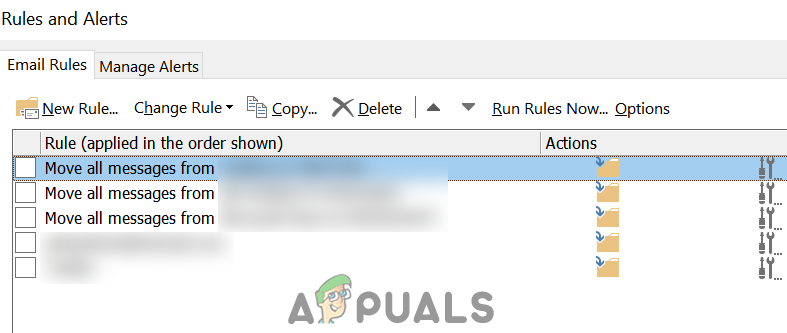
Uncheck Outlook Rules - Now, relaunch Outlook and enable one Outlook rule at a time and check if it is operating fine. If so, then enable all the Outlook rules one by one to check if the issue is resolved.
- If not, then remove the problematic rules and then re-add it to check if the Outlook rules are working fine.
- If not,remove all the rules (you can also use Outlook.exe /cleanrules command line switch) and then add back the rules to check if Outlook is working fine.
- If not, delete all the rules from the client and server as well (discussed in solution 5) and then restart your system.
- Upon restart, add a rule to the Outlook client and check if it is working fine. If so, then import the Rules (exported at step 3) and check if the rules are working fine.
- If not, remove rules and delete the Profile file (as discussed in solution 4) and restart your system.
- Upon restart, readd the profile (as discussed in solution 4) and add a rule to it to check if the issue is resolved.
- If so, then import the rules and check if Outlook is working fine.
Solution 8: Reduce the Folder Size
Outlook rules might not work if the folder size of your data file is too huge. In this case, reducing the folder size by clearing your mail may solve the problem.
- Launch Outlook and right-click on the email address in the left pane of the window.
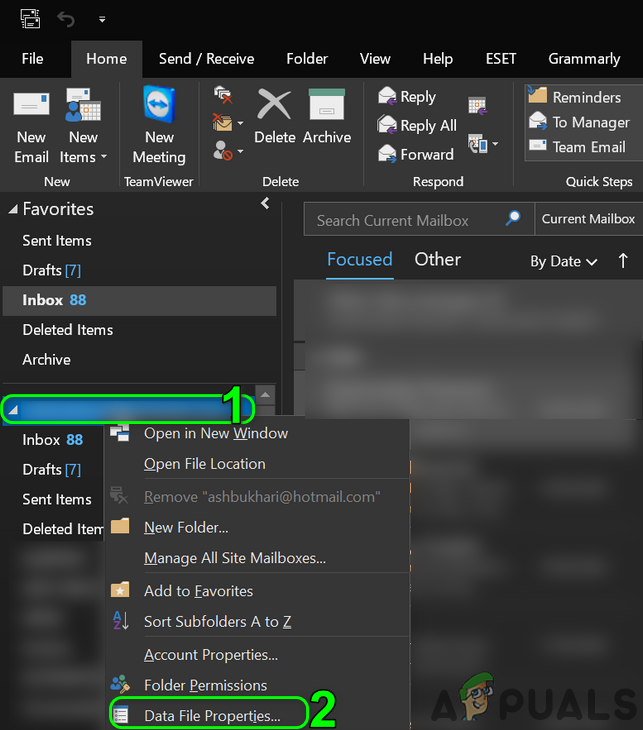
Open Data File Properties of the Email - Now select Data File Properties and click on the button of Folder Size.

Check Folder Size of Email Address in Outlook - Then check if folder size is huge (e.g. in GBs). If so, then delete the unnecessary emails to reduce the size. You can also use Conversation Clean Up (File>Options>Mail>Conversation Clean Up) to clear up the folder but do not forget to back up essential emails/attachments.
- After reducing the size of the folder (less than 100MB), check if the Outlook rules are working fine.
If no solution was effective in solving the issue, then check if trying another account solves the issue. Also, check if restoring your system to an earlier image helps out the issue. Moreover, check if you can move emails to a user-created folder based on a rule. If the issue is still there, then try to import Outlook rules from an Outlook client (from another system where Outlook rules are working fine). If the issue is still there, then manually run the rules (till the issue is resolved).


